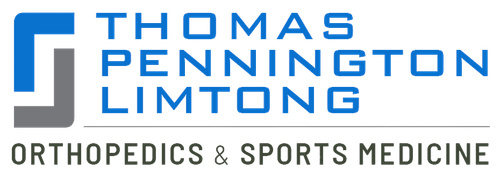 A separated shoulder refers to a condition that causes the clavicle (collarbone) to detach from its normal attachment on the shoulder blade. This condition is frequently misunderstood as a shoulder dislocation. However, it is a different type of injury.
A separated shoulder refers to a condition that causes the clavicle (collarbone) to detach from its normal attachment on the shoulder blade. This condition is frequently misunderstood as a shoulder dislocation. However, it is a different type of injury.
Shoulder separation usually occurs when a patient falls on the outside of their arm or shoulder. It leads to a bump and pain on the top of the shoulder. The bump develops due to the end of the clavicle pushing up against the skin.
Noninvasive treatments are a suitable option for most patients with a separated shoulder. A majority of orthopedic surgeons also agree that all type I and type II separations can be treated nonsurgically.
Thomas and Bigler Knee and Shoulder Institute, led by board certified orthopedic surgeons Dr. Steven C. Thomas and Dr. Gregory T. Bigler, provides orthopedic treatments to patients in Las Vegas, Nevada, and surrounding communities.
Surgical Treatment Options
The primary objective of all surgical shoulder separation procedures is to restore the normal alignment at the end of the clavicle with the shoulder blade’s outer edge (the acromion). The ultimate goal is to restore the alignment of these bones, stabilize their position, and provide pain relief at the acromioclavicular joint.
The main surgical options are:
Repairing the AC Joint
It makes sense to repair the acromioclavicular joint. The most visible facet of this injury is a joint disruption. Therefore, aligning and holding the joint in an appropriate position seems logical. The AC joint is usually held in position with metal pins or plates known as Kirschner wires (k-wires).
The disadvantage of this surgery is that it does not address the damage to the strong ligaments that hold down each end of the collarbone. In addition, the patient may experience pain due to the metal implants placed to position the joint. These may have to be taken out, and a more concerning complication is the likelihood of these implant moving from their position.
This involves the movement of these implants within the body. In some frightening instances, there have been reports of k-wires placed in the collarbone ending up within the chest cavity over a period.
Holding the Clavicle Down
There are many techniques to treat AC joint injuries that involve holding the clavicle down. Some of these approaches use metal while others employ heavy sutures. Typically, the clavicle is held to the coracoid process which is a hook of bone in front of the shoulder right underneath the collarbone.
The surgeon may either put a screw from the clavicle into the corocoid or wrap the two bones together firmly using sutures. The drawback of these methods is that the screws usually have to be taken out and sutures can cut through and break the bone.
Reconstructing Ligaments
In this category of options, the ligaments that hold the end of the collarbone in the appropriate position may be reconstructed. There are various options for this procedure using either donor tissue or the patient’s own tissue.
A commonly performed procedure in this category is known as a Weaver-Dunn surgery. This involves the shifting of the major ligaments that connect to the acromion over to the end of the collarbone.
This holds the collarbone in its proper place. Another option is the coracoclavicular ligament (that were torn at the time of the shoulder separation injury) reconstruction with either a donor tendon or one from the patient’s leg.
The surgeon wraps the tendon graft around the hooked coracoid and then into the collarbone. Dedicated board certified orthopedic surgeons Dr. Thomas and Dr. Bigler receive patients from Las Vegas, Nevada and other towns and cities in this part of the country for orthopedic treatments.
If you would like to schedule an appointment or learn more about the Knee and Shoulder Institute procedures & treatments performed by Las Vegas, Nevada board-certified surgeons Steven C. Thomas, MD and Gregory T. Bigler, MD. Contact the office today click here.
